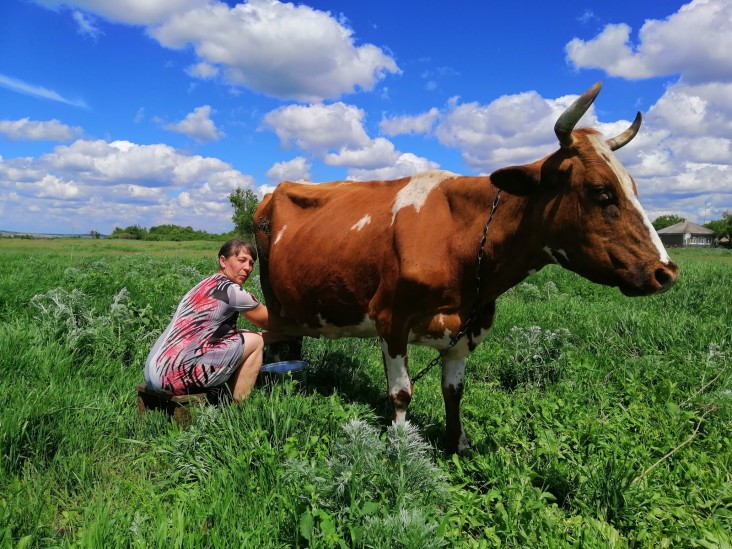Speeches Shim

How USAID helped household dairy farms affected by the conflict survive, through co-investment with a milk processing factory.
Just kilometers from Oksana Kvitka’s* small six-cow dairy farm in Luhansk, Ukrainiain soldiers patrol a precarious border with Russia, guarding against further military encroachment.
Since the start of Ukraine’s 2014 conflict with Russia, fear in the war-torn oblast (currently divided into government- and non-government controlled areas) is constant. As an estimated 500,000 civilians fled to escape the violent shelling. It emptied local coal mines, steel factories, and farms. Oksana, her disabled Afghanistan-war-veteran husband, and their seven children, ages 6-31 were among a few thousand small dairy farmers who stayed put. She had to in order to continue milking her cows twice daily.
“We have always made our living by selling milk and prayed the local milk processing factory would not close. Where would we go?” When rains washed out the dirt road connecting their farm to the main road, preventing milk collection, the family rolled the milk canisters the 1.5km distance to the collection point.
The massive exodus of people and punishing loss to urban markets in the non-government controlled areas has devastated the area’s economy. Before the conflict, thousands of household farms met the local demand for raw milk and dairy products. After the conflict began, demand was depleted, and the milk processors in Luhansk faced an additional challenge - the smallest dairy cow population in decades. The herds went from 55,000 heads in 2013 to 27,000 heads in 2016. The quality of milk had deteriorated as well; ninety percent of the milk produced did not meet the quality standards in Ukraine’s 2014 European Union Association agreement.
A co-investment agreement between USAID’s Agriculture and Rural Development Support (ARDS) activity and the Luhansk Bilovodsk Butter Factory helped to stabilize the region’s hard-hit milk production industry and allowed Oksana’s dairy farm, and others like it, to survive. The factory is one of only four milk processors in Luhansk’s government-controlled area, in contrast to the 25 processors in the Luhansk and Donestk oblasts, pre-conflict. It was selected for partnership in part because it provides a market to local milk suppliers, which in turn would ensure the factory’s survival.
Working in collaboration with USAID/ARDS, the Bilovodsk Butter Factory provided comprehensive training sessions to milk collectors who are employed by the Factory on how to increase milk quality and protect the health of livestock, information that the milk collectors shared with the dairy farmers.
Oksana explained that when the collectors pick up the milk, they discuss fat content and milk cooling requirements with the dairy farmers in addition to how to properly care for the animals and feed them nutritiously.
“We love our cows and want to take great care of them,” Oksana said.
* last name changed for privacy reasons

Comment
Make a general inquiry or suggest an improvement.